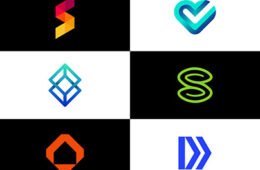As the name suggests, game-based learning incorporates gaming techniques into the learning process. You might wonder how that is possible. If that is the case, consider reading this article as it debunks how this teaching method is achieved, its practicality, and how it compares to other learning models.
This mode of content acquisition, like any other teaching mode, focuses on making it easier for learners to master concepts. However, there is more to this learning method. It also fosters a better understanding of particular skills while encouraging the students to interact among themselves and the teacher during the learning session.
Top 12 Distinguishing Characteristics of Game-Based Learning
These factors contribute to the experience being enjoyable and involving. Outlined below are the primary aspects of game-based learning.
1. Engagement
If you are a fan of video games, you can attest to how engaging they can be. Picture that same model in a class setup. The model fosters engagement by capturing the learners’ attention since it entails time-bound challenges.
The adrenaline that comes with winning the game is enough to have the rest of the class quiet and focused on listening to the instructions and attempting to share their insights about their thoughts regarding particular concepts.
2. Motivation
The joy and pride of winning a game are enough motivation to keep the learner focused throughout the learning session. It also helps build an interest in the subject or concept being discussed.
3. Active Participation
This teaching mode plays a significant role in fostering active learning since it encourages participation. Students engage in solving problems and decision-making within the game environment. Therefore, it is easier for the learner to relate a concept to a game.
3. Thinking
Most complex computer video games involve critical thinking in decision-making. This mode of learning also replicates the same concept. Therefore, it thrusts the learner into critical thinking.
4. Solution-Oriented
Another significant skill that this mode fosters is adequate problem-solving skills. It involves the learner facing complex situations that require thinking critically and establishing the ideal solution to a problem.
5. Feedback
Another critical aspect of this teaching mode is instant feedback. Games provide instant feedback on how well you performed. So is the case with game-based learning.
Using the feedback, you can track your progress and understanding of concepts. You can also gauge how much more effort you need to put in to be the best.
6. Collaboration
This mode of teaching also fosters collaboration. Occasionally, teachers encourage learners to engage in multiplayer or collaborative games. This aspect is essential in nurturing teamwork. It is also vital in promoting strong communication skills and building interpersonal relationships.
Working together does more than foster social interaction. It also opens up the learners’ to their peers’ thought processes, allowing them to learn from one another.
7. Personalization
Another significant aspect of game-based learning is it allows for personalization. Therefore, it will enable learners to dictate their learning pace and style. This way, they can comfortably blend it with other learning models that entail involving writing service providers that allow you to buy essay online.
Personalization in game-based learning exposes the learner to different difficulty levels. The learner is adequately challenged and, at the same time, encouraged to sharpen their problem-solving skills.
8. Continuous Progress
This learning mode has a database with tools that learners cool leverage to analyze their progress. These tools also highlight the learner’s best strengths and areas of concern.
As a result, third parties can be involved in monitoring the progress. They can also issue instructions when they need to.
9. Contextual Learning
This learning mode simulates real-life problems and situations, providing a context for students to test their problem-solving skills. Therefore, it is preferable since it bridges theoretical concepts and their real-life application.
10. Reduced Anxiety
This mode of learning fosters a more relaxed environment for students to learn. This relaxed environment makes it easier for students to understand concepts and ask questions for clarification. This aspect makes it better than the traditional classroom setup. Sometimes you might not need help from custom essay writing service providers online.
11. Subject Variety
This education model allows for learning that encompasses many subjects. Therefore, it fosters a better chance for learners to acquire multiple and relevant skills for solving real-life problems ranging from coding to financial literacy.
12. Rewards
This learning mode also mimics games by assigning awards for every level passed. For instance, you could gain recognition for surpassing a milestone through:
- Points
- Badges
- Rewards
- Leaderboard features
Classes of Game-Based Learning

Outlined below are some of the common games that highlight the evolution of this mode of learning:
1. Cards
This type utilizes cards on a deck. You can utilize it to learn and master specific Mathematical concepts.
2. Board
This category of games involves a board and the movement of pieces of the board. Chess is an example of a popular board game. However, kids can explore the other hundreds of board games to establish those they can use for learning.
3. Word Games
Word games are designed to focus on the properties of languages. Scrabble is the perfect example of a word game. Devices have word games installed; hence, you do not have to rely on the traditional Scrabble board.
4. Puzzle
This type of game tests a learner’s critical thinking and ability to use logic in problem-solving. Puzzle games entail understanding patterns, sequences and the special ability to solve puzzles. Sudoku is the perfect example of a puzzle game.
5. Simulation
This category of games is designed to replicate real-life activities. An example is The Sims, launched in 2000. It entails creating and exploring virtual worlds.
6. Video
Traditional video games were electronic games that entailed the player manipulating what appeared on the screen. Some of them include Fortnite and Pac-Man.
7. Role-Playing Games (RPGs)
This category involves characters who assume the role of imaginary characters and engage in adventure. A famous example is Dungeons & Dragons, launched in 1974. Another example is Prodigy Math, popular with learners between grades 1 and 8.
Choose your preferred type of game based on your level of education and the goal you wish to achieve.
Advantages of Game-Based Learning
Listed below are the benefits of this learning model:
- Better retention of information
- Better acquisition of hands-on skills
- Minimized chances of failure in reality
- Better receptivity to learning
- Better skills are required to solve complex problems
- It entails the use of familiar devices
- It stimulates the student’s imagination
- It fosters the ability to simplify complex concepts into simpler ones
- It encourages learning that could last a lifetime
Disadvantages of Game-Based Learning
Even though these advantages might woo you into thinking game-based learning is the way to go, it is essential to note that research on its effectiveness is subject to analysis. Some researchers argue that the learning mode has detrimental effects that might hinder the learner’s progress.
These are the possible drawbacks of game-based learning
- It can be a source of distraction
- Learners are subjected to excess screen time
- Some games are more complex than others
- It relies entirely on technology
- Sometimes it is not aligned with some concepts
- This learning mode cannot replace traditional learning strategies
Gamification
While unpacking details about this unique learning mode, you will likely come across a new term, gamification. What does it entail?
Game-based learning entails tutors using specific games to teach specific concepts. Gamification focuses on game design elements and integrating them into the learning process. Some of the features of gamification include:
- Earning points
- Acquiring badges
- Being on leaderboards
- Qualifying for rewards
Applying gamification in non-game settings helps draw and establish the difference between game-based learning and gamification.
For instance, in the classroom lingua, gamification could refer to creating a leaderboard to recognize the top scorers based on those who complete their tests on time. Assigning a title and awarding a prize to the best-performing student is a form of gamification.
In gamified learning, the learner secures a badge or a title for solving a Math problem on the worksheet. You could use a leaderboard to track the learner’s performance. The leaderboard also creates a sense of competition, encouraging the other students to pull up their socks.
Meanwhile, in game-based learning, the student is immersed in a fantasy, a replica of a video game setting, with questions that need to be solved. To advance to other levels, the student must answer prompts set by their teacher.
Game-based learning is another teaching method you could explore. As outlined above, it has its advantages and drawbacks. Therefore, before settling on it, weigh your pros and cons. Take time to understand your desired goals before adopting this learning method. If not, explore the other learning models that focus more on the learner.


